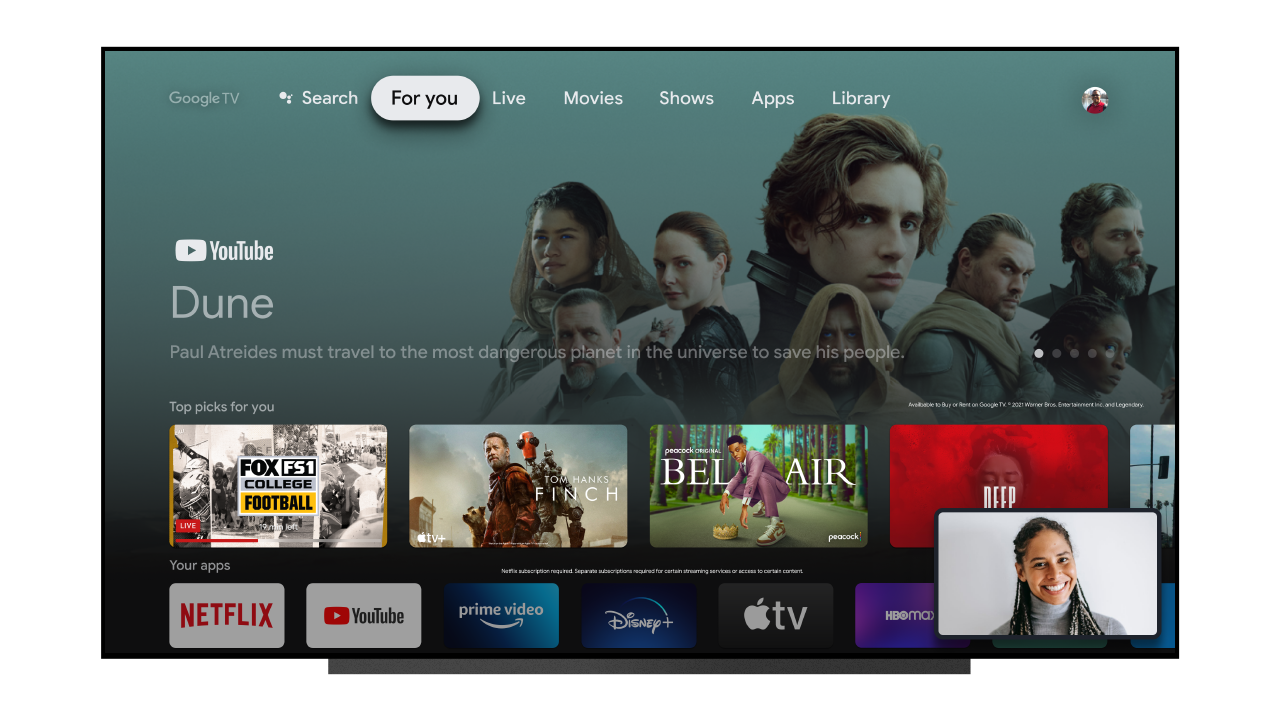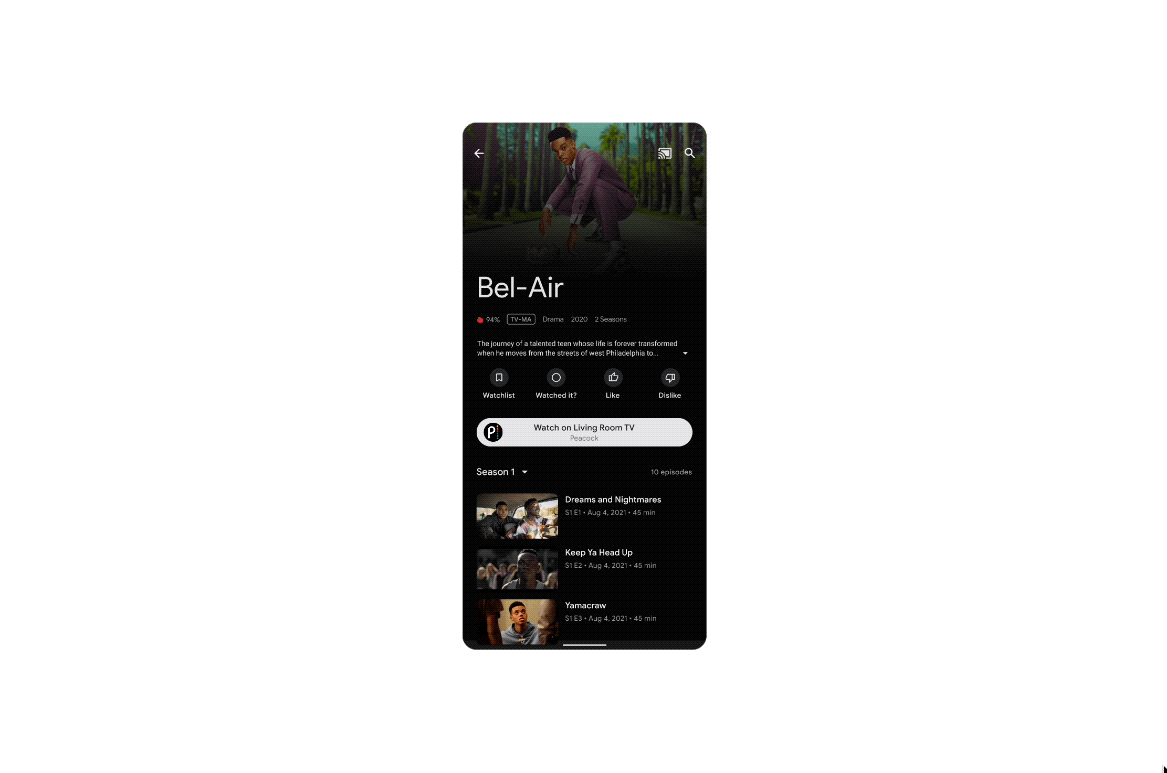Android 13 is fast approaching maturity, and now the Android TV team is starting to roll out its additions so developers can make the best use of the largest screens in your home. TV announcements from Google I/O 2022 appear at first glance to be very developer-oriented, but they’ll have some direct implications that give users a better experience with apps in the future.
Before hitting the platform changes, the Google TV app gets a quick tip of the hat for adding the ability to Cast shows and movies to your TV without switching to the app that would be used for streaming them. It’s a relatively small change, but if you browse the recommendations and see something you’re interested in, this will save several taps.
The biggest user-facing addition of the next Android TV update is actually an update to the Picture-in-Picture API. Google notes that there has been a significant uptick in people using their TVs to monitor security cameras and take video calls. To improve the experience of having several streams appearing on screen, the picture-in-picture API has been updated to support more videos from group calls and a new docked mode that won’t overlay content on top of other apps, but instead resizes the main app to allow PIP windows to be seated on the edges. There’s also a new keep-clear API that allows apps to mark important parts of the screen where picture-in-picture windows should never cover.
Once developers have an opportunity to make use of these APIs, it should allow users to clearly see the things they want to watch while keeping an eye on one or more cameras pointed at a sleeping baby, the front door, or even a friend (or group of friends) watching the same thing.
Improving audio support has been a growing topic lately with the rise of Dolby Atmos and a slow rollout for 5.1 surround sound in YouTube TV. To improve compatibility with new TVs, Google is adding new APIs to the AudioManager to allow apps to detect audio routing capabilities and choose a playback mode best suited to the hardware. Apps can now also detect changes to the HDMI chain using the MediaSession, and optionally respond by pausing playback or reacting in whatever way is appropriate.
The final highlight of the announcements focused on supporting different keyboard layouts in the InputDevice API. This is a valuable feature for game developers that want to build control schemes based on the physical position of keys rather than binding to key codes.
Most of us will be waiting a while to see Android 13 rolling out to any of our TVs and set-top boxes, unless you have an ADT-3 lying around, but these updates show us some of the quality of life improvements that are set to arrive as devices and apps are updated.


